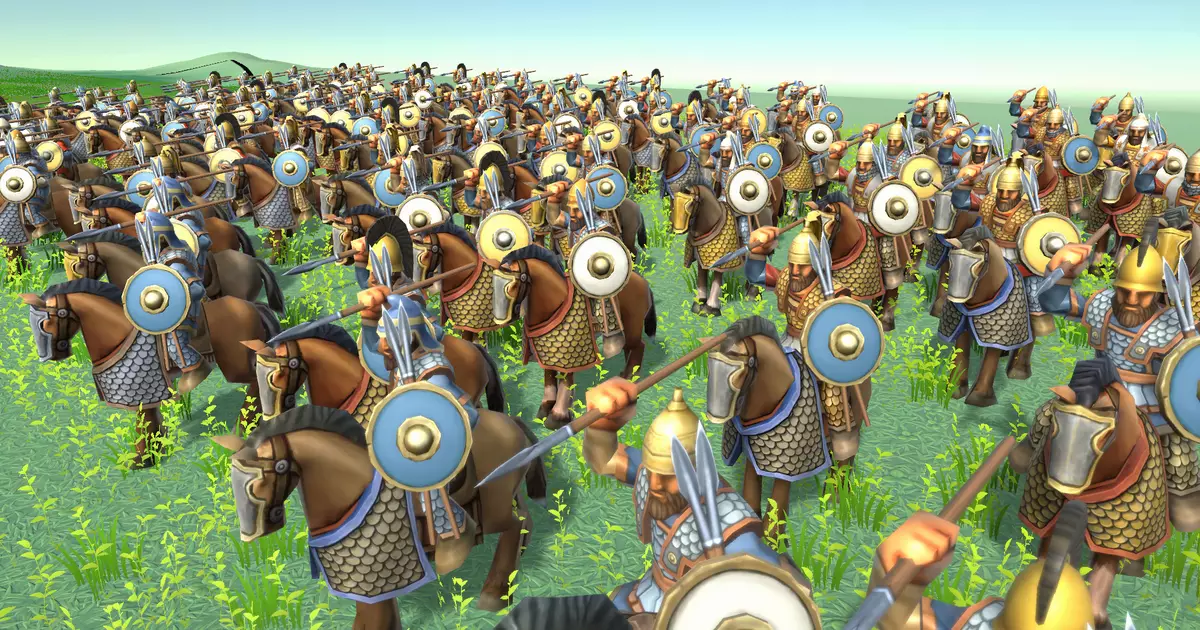In a curious revival, MicroProse, a name steeped in the annals of gaming history, has announced the launch of Strategos, a real-time tactics game that transports players to the heart of classical antiquity. The mere mention of MicroProse often evokes nostalgic memories of complex and innovative strategy games, and thus, this latest venture sparks interest not only for its gameplay but also for what it symbolizes: a return to strategic gaming’s rich roots. Unlike the sprawling empire simulation found in the Total War series, Strategos appears to lean into the battlefield dynamics, carving a niche focused straightforwardly on the thrill of combat and historical re-enactment.
Departing from Total War: A Unique Vision
At first glance, one could easily mistake Strategos for a direct competitor to Total War: Rome. However, a deeper examination reveals its distinct identity. Strategos is conceived by a single designer/programmer, which gives it an intimate feel, contrasting sharply with the sprawling teams behind large-scale productions. This focus seems to exist in a specialized realm of tactical combat, steering away from the grand vistas of empire management that Total War is famous for. Here, players will find themselves amidst chaotic skirmishes, devoid of an overworld map but rich in the nuances of historical tactics.
The game promises a staggering array of over 120 armies and 250 unique units, an ambitious concoction by any standard. This exhaustive selection branches from the typical fare of Roman legions to the less familiar ranks of Meroitic Kushites and Spanish Celtiberians. The diversity of units lends itself to an intricate battlefield tapestry, reminiscent of a children’s candy mosaic, where historical fidelity meets whimsical creativity. For wargaming enthusiasts and history buffs alike, the prospect of deploying such a vast range of factions tantalizes the imagination.
A Promising AI Overhaul
The AI enhancements in Strategos deserve a special mention. The developers have undergone various improvements in the game’s behavior and deployment tactics, fundamentally altering the way battles unfold. No longer will players simply encounter a predictable enemy; instead, the game boasts bespoke AI tailored to the uniqueness of each faction. Whether it’s coordinating flanking maneuvers with horse archers or ensuring infantry formations hold their ground, the intricacies promised by the developers could revolutionize the player experience. For those jaded by the “kiting” tactics in other popular strategy games, this attention to detail is a welcome relief.
Additionally, the command structure within Strategos has a refreshing twist: proximity matters. Instead of commanding from a high vantage point, players are required to place their generals within earshot of troops or dispatch couriers with orders, echoing the old-school aspects of battlefield communication. This adds a layer of strategy that goes beyond mere unit placement.
Gameplay Mechanics and Tactical Nuances
The essence of Strategos pivots on the depth of its tactical gameplay, marrying the immediacy of real-time engagements with the strategic intricacies of tabletop wargaming. Players will engage in significant battles that require meticulous planning and quick reflexes, where fog of war, terrain interactions, and troop morale become pivotal elements. The game’s command and control systems appear to meld various tactical nuances, ensuring every phase of combat feels engaging and layered.
The different modes of play also enhance the experience, allowing players to dive into campaigns with historical figures or replay actual historical battles. This flexibility can cater to a range of player preferences, whether one seeks to relive famous encounters like the Battles of Issos and Raphia or craft new scenarios altogether.
A Nod to History and Military Training
Interestingly, the name “Strategos” is not merely a catchy title but a nod to military simulation. Originally developed as a training tool by Charles A. L. Totten for the US Army, the term evokes a legacy of strategic military thinking. This history not only grounds the present game in practice but also hints at an ethos of learning through simulation, akin to the profound insights discovered in wargaming—a field that thrives on understanding tactics and strategy.
As the industry thrives with reinventions, projects like Strategos remind players and developers alike of the importance of delving deep into history and strategy. The ambitions laid down with this game, layered with historical faction diversity and intelligent AI, create an alluring entry into the genre that calls for further attention and exploration.
Importantly, while we await its arrival on platforms like Steam, the gaming community is left with a thrilling taste of what may emerge as a landmark title in modern tactical warfare. Each detail cultivated in Strategos aims not only to entertain but to educate, allowing players to probe the intricacies of battle while connecting deeply with the eras of history that have shaped our world. This could indeed redefine our expectations for tactical warfare games in the years to come.

